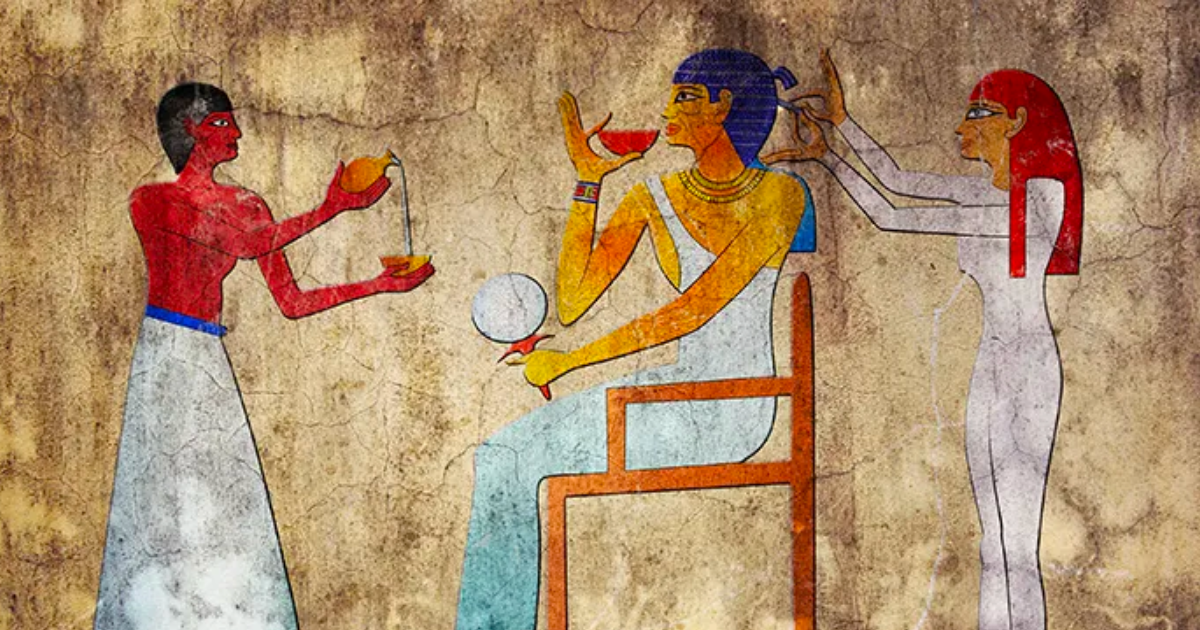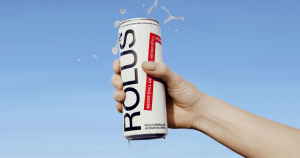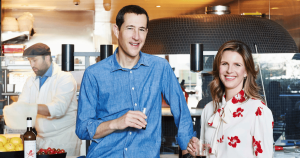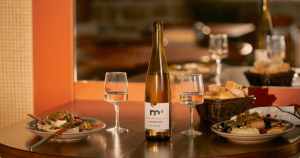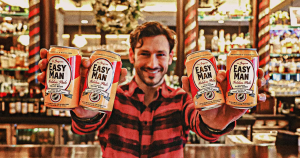The history of adult drinks is as rich and varied as the civilizations that crafted them. Before diving into the world of non-alcoholic delights, it’s key to understand the origins of our ancient relationship with alcoholic drinks. Let’s embark on a beverage journey through time!
The Dawn of Inebriation: Why did humans start drinking alcohol in the first place?
Alcohol’s introduction into human history was likely a serendipitous accident. Around 7,000 – 6,600 BCE in ancient China, people noticed that rotting fruits or grains underwent a curious transformation, producing a liquid that gave the imbiber a buzz when consumed. From that point on, the world was forever changed as different cultures began crafting and consuming alcoholic beverages for a variety of reasons, including:
- Preservation: In an era without refrigeration, fermentation served as a preservation method. Alcohol was safer to drink than contaminated water in many areas.
- Medicinal Use: Early civilizations believed alcoholic beverages had healing properties.
- Religious and Ritualistic Significance: Alcohol often played a role in religious rituals, being viewed as a gift from the gods or a means to connect with the divine.
- Social Cohesion: Sharing a drink has always been a social event, helping to strengthen bonds within communities.
Alternatives to Inebriation
From 7,000 BCE until very recently in the 21st century, humans had little to no understanding of the long-term negative health implications of consuming alcohol. Hangovers, mental fogginess, etc. provided clues, but nutrition science simply wasn’t advanced enough for anyone to know for sure. So, alcoholic drinks proliferated.
Despite the popularity of alcohol across many cultures over thousands of years, there were also plenty of interesting non-alc options.
Ancient Elixirs and Tonics
As societies grew and evolved, so did their repertoire of beverages, many of which were non-alcoholic.
- Infused Waters: Ancient Egyptians and Greeks appreciated water infused with herbs and spices, attributing therapeutic properties to them.
- Teas: Popularized in China beginning around 2,700 BCE, teas rapidly became symbolic of health, wellness, and leisure.
Medieval Refreshments
While alcoholic beverages were staples in medieval Europe, no- and low- ABV alternatives also found their place.
- Possets: This blend of milk, spices, and (occasionally) eggs was a cherished non-alcoholic drink of the time.
- Small beer: A lightly fermented drink with negligible alcohol content common in medieval households. Interestingly, the archaic term “small beer” persists in modern day America because federal regulators define “beer” as a fermented malt beverage containing >0.5% ABV. They also define “non-alcoholic” as containing <0.5% ABV. So if you accept their definitions, “non-alc beer” is actually an oxymoron. When you read the fine print, you’ll notice that no US-based non-alc beer brand calls its beers “beers.” Rather, they’ll use terms like “brew,” “cereal beverage,” or even “small beer.”
Colonial Explorations
The exploration of faraway lands introduced novel ingredients, leading to innovative beverages.
- Root beer: Starting as a fermented mixture of berries, herbs, and roots, its non-alcoholic variant gained prominence in 19th-century North America.
- Shrubs: Also known as drinking vinegars, shrubs became popular in colonial America. These were concentrated syrups made from fruit, sugar, and vinegar. Not only did they offer a refreshing taste, but they also served as a preservation method for fruits. They were mixed with water or soda water to create a tangy, refreshing drink, and were sometimes combined with alcohol for a more spirited concoction. Shrubs persist today and are a hugely underappreciated sub-category within adult non-alcoholic beverages. Here are a few shrub cocktails worth trying.
- Lemonade: Popularized in 17th-century Paris, this sweet lemon concoction quickly became an international sensation.
The Temperance Wave
The late 19th and early 20th centuries saw a push against alcohol, birthing many alternatives.
- Soda pop: As temperance movements gained ground, soda fountains emerged as popular social spots. Beverages like Coca-Cola were initially advertised as “temperance drinks.”
- Grape juice: Offered as a wine substitute, especially for religious rites, grape juice became a staple in many households.
The Modern Era and Mocktails
With increasing health awareness and diverse preferences, alcohol alternatives have exploded in recent years. As of September 2023, there were over 1,000 distinct liquids indexed on Dry Atlas, including spirits, wines, beers, aperitivi, cocktails, and more.
The rise in non-alcoholic beverages owes much to advancements in production technology. Techniques like reverse osmosis and vacuum distillation are now used to craft non-alcoholic variants with comparable depth and complexity. And thanks to the blend of food science and technology, modern mocktails are more than just soda-and-juice blends; they’re artisan creations that use botanical extracts and aromatic compounds to deliver a sophisticated taste.
In Conclusion
From the accidental discovery of fermentation to the finely crafted mocktails of today, our beverage journey reflects human innovation, societal shifts, and the timeless quest for flavorsome drinks. While alcohol has a storied past, non-alcoholic beverages have always carved their niche, quenching thirsts and souls across eras. Cheers to the tales our drinks tell!


